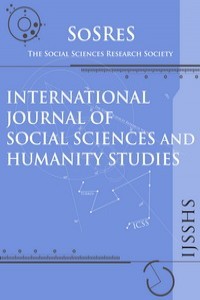DETERMINATION OF THE FIRM-LEVEL WAGE RATE: THE ROLE OF EMPLOYER-EMPLOYEE SPECIFIC EFFECTS
DETERMINATION OF THE FIRM-LEVEL WAGE RATE: THE ROLE OF EMPLOYER-EMPLOYEE SPECIFIC EFFECTS
___
- Abowd, J.M., Kramarz, F. & Margolis, D.N. (1999),“High Wage Workers and High Wage Firms”. Econometrica, Vol. 67, pp. 251-33
- Cameron, C. & Trivedi, P. (2009), Microeconometrics Using Stata, College
- Station, Texas: Stata Press. Coedited with John Haltiwanger, Jim Spletzer, Jules Theeuwes and Ken Troske, (2007), The Creation and Analysis of Employer and Employee Matched Data: part of the North Holland Contributions to Economic Analysis Series, Bingley,
- UK: Emerald Group Publishing Limited. Jaeger, D. A., and M.E. Page, (1996), “Degrees Matter: New Evidence on
- Sheepskin Effects in the Returns to Education,” Review of Economics and Statistics, Vol 78, No. 4, pp. 733-740. Jeffrey M. Wooldridge, (2002), Econometric Analysis of Cross Section and Panel Data, Cambridge, London: The MIT Press.
- Mincer, J. (1974),”Schooling Experience and Earnings”, New York: Columbia University Press.
- Başlangıç: 2009
- Yayıncı: Sosyal Bilimler Araştırmaları Derneği
Hakan TURGUT, İsmail TOKMAK, Cem GÜÇEL
THE RELATIONSHIP BETWEEN ACCOUNTING BETA AND CAPM: EVIDENCE FROM TURKEY
PERFORMANCE OF EMERGING MARKET DIVERSIFIED EQUITY FUNDS
THE IMPACTS OF SELF-BRAND CONGRUENCE ON BRAND LOYALTY: A STUDY ON CELLULAR PHONE USERS
Can Deniz Köksal, Mehmet Özer Demir
ORGANIZATIONAL BEHAVIOR IN THE MACEDONIAN HOTEL BUSINESS
Mislim ZENDELİ, Blagica Rizoska TULOV
CORPORATE GOVERNANCE AND FINANCIAL PERFORMANCE OF BANKS IN THE POST-CONSOLIDATION ERA IN NIGERIA
Ahmad Bawa Abdul-Qadir, Mansur Lubabah Kwanbo
